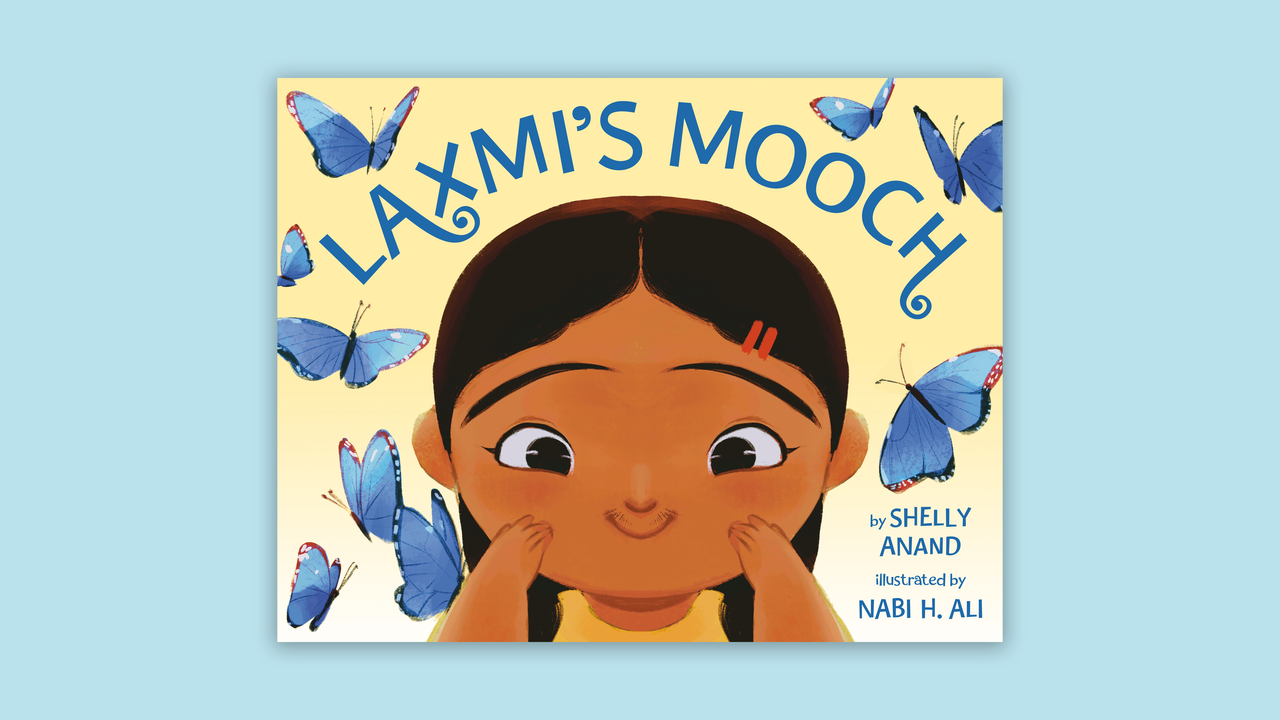This Great New Children’s Book Tackles Body Hair

[ad_1]
When Shelly Anand was pregnant with her daughter, she found out her friend’s daughter was being bullied at kindergarten for having a mustache. “It instantly bought back all these memories of being tormented as a kid,” says Anand.
From the age of 11, Anand, who is now an immigration and labor rights attorney, was similarly teased, resulting in a 20-year journey of hair removal that included threading, shaving, waxing, and bleaching her body hair. That odyssey of ripping, smoothing, and plucking—“it doesn’t have to be the answer,” she says. “The answer can also be changing the culture.”
To do her part, Anand wrote a children’s book titled Laxmi’s Mooch. (Mooch means mustache in Hindi.) It centers on a girl named Laxmi, who does indeed have hair on her upper lip. At recess, classmates point out to Laxmi that she has whiskers like a cat. She starts to notice hair on her arms, legs, and the rest of her body. With her parents’ help, Laxmi realizes that hair is natural and grows all over our bodies, regardless of gender or race.
Anand’s book release in March 2021 comes 12 months into a pandemic where many are confronting their relationship with body hair amid salon closures. At the same time, artists and activists are pushing the body-positivity discussion to include body hair, a highly stigmatized yet completely natural feature of human bodies. Recently magazine covers have featured the likes of actor Maitreyi Ramakrishnan casually sporting arm hair and activist Esther Calixte-Bea in a dress revealing her chest hair.
Calixte-Bea had seen a sprinkle of media images of women with hairy underarms, but she had never seen any with chest hair. The Canadian artist felt isolated as she silently struggled. She would wax it off and experience painful ingrown hairs and bumps—only to find the hair grow back thicker and darker. She would instinctively pull up her shirt in constant fear that someone might catch a glimpse. The never-ending regimen of electrolysis, shaving, waxing, and epilating made her feel like she was at war with her own body. “I was tired of having to go through so much pain just to be beautiful,” she says, “I didn’t want to be in this world anymore.”
Gradually, Calixte-Bea turned to positive affirmations, prayer, and art to reframe her attitude toward herself. In 2019 she removed all the old pictures from her Instagram account and started fresh. She posted a photo of herself in a lavender dress, baring her chest hair for all to see. It wasn’t her secret anymore. “[It was] kind of like baptizing myself, reborn into this new person,” Calixte-Bea says. “This person is truly who I am.”
She named the series of self-portrait photos in the dress of her own design the Lavender Project. The collection challenges conventional notions of femininity and beauty. Since its inception, hundreds of messages of support from women all over the world have poured in. “It’s funny, because they all thought they were alone,” Calixte-Bea says. Eventually, her art and activism earned her the cover of Glamour U.K. in 2020—the first woman to be featured on the cover of a major magazine with chest hair.
She was overjoyed at the possibility that her image could inspire other women to begin their own self-love journey with their body. Like Anand, she had grown up in a society where images of beautiful women did not include body hair. “I was like, Finally this is happening,” Calixte-Bea says. “This was needed.”
[ad_2]
Source link




